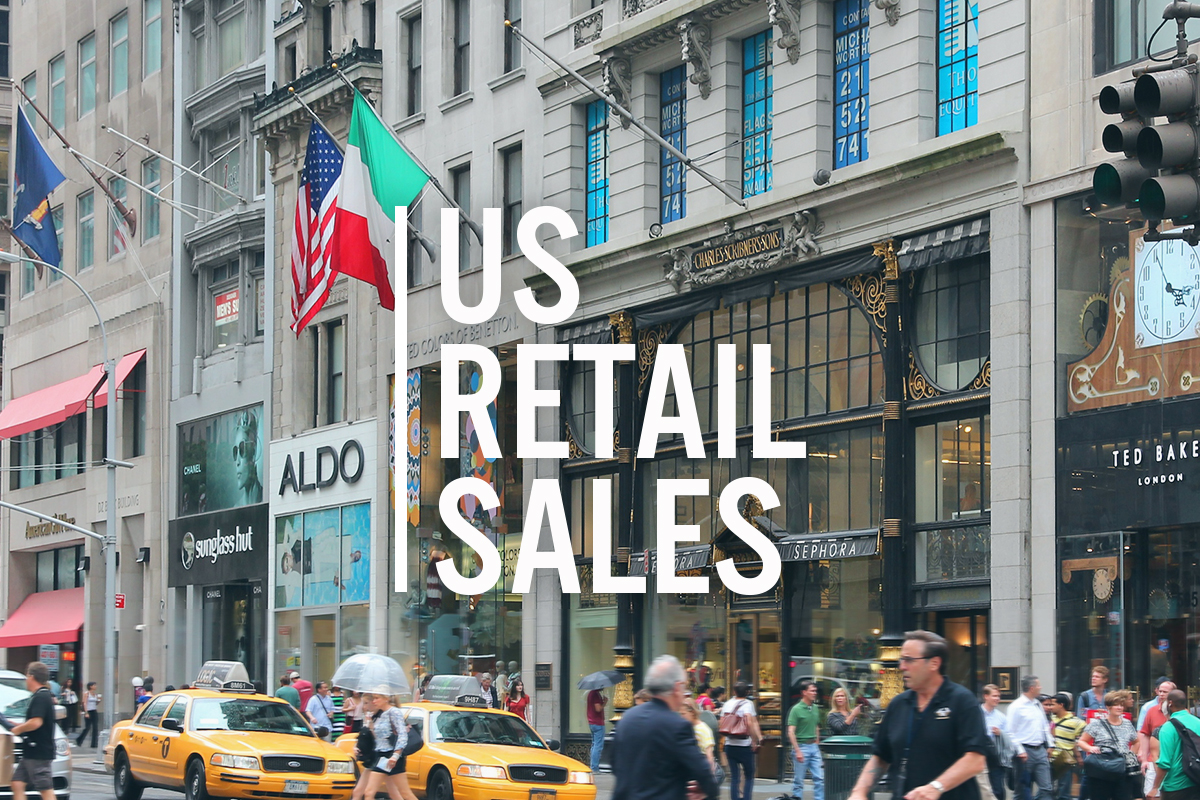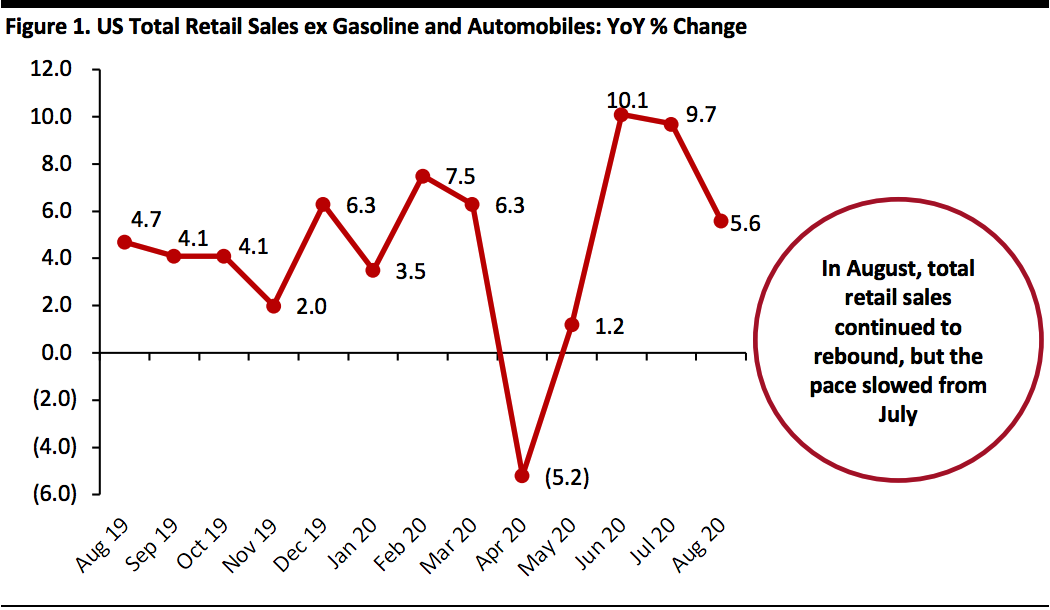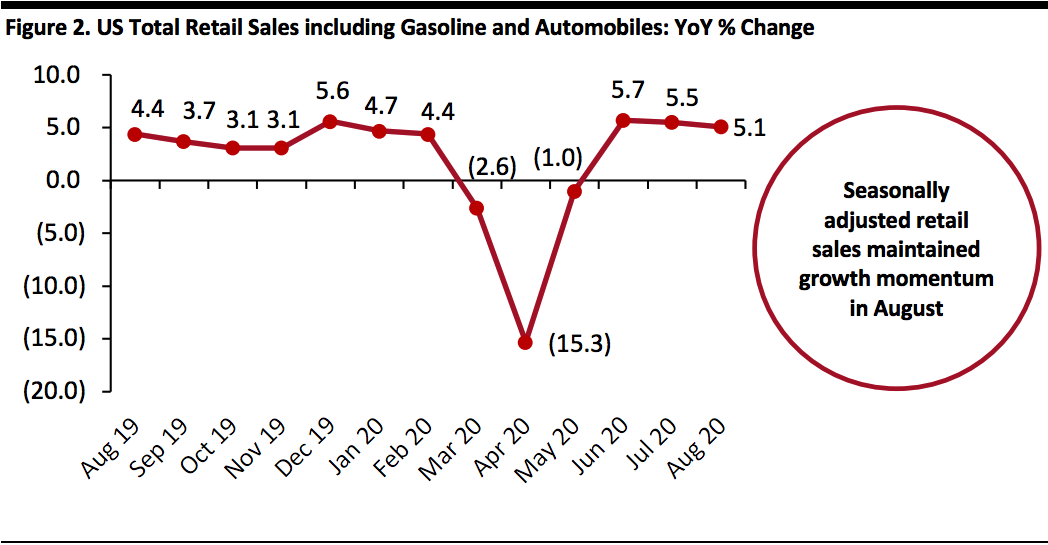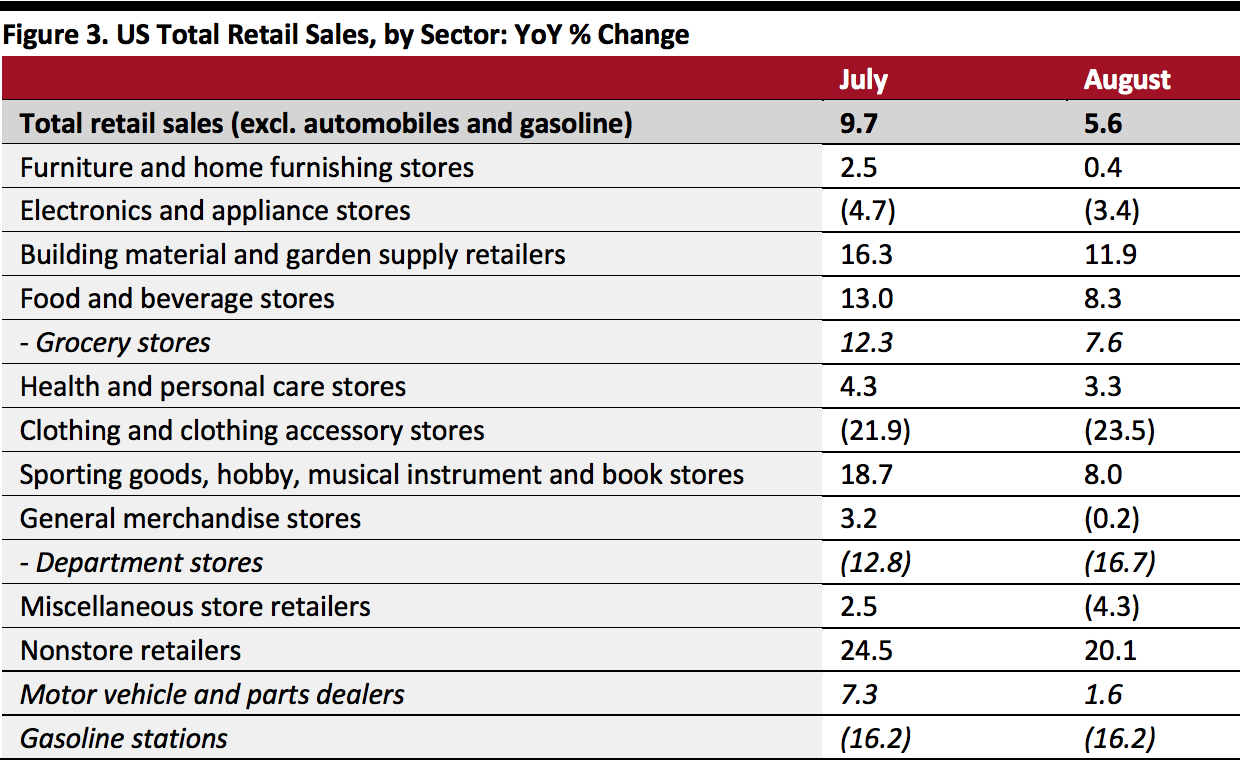
Nitheesh NH
Amid still difficult circumstances, US retail sales continued to rebound strongly in August, though at a slower pace compared to July, fueled by strong growth in several sectors.
Coresight Research’s measure of core retail sales is the unadjusted year-over-year change, excluding gasoline and automobiles. This metric stood at a solid 5.6% in August versus July’s 9.7% rate (which was revised up from a first estimate of 10.0%). The strongest growth was seen by nonstore retailers, home-improvement retailers and sports and leisure goods retailers, as we discuss later, suggesting strong demand for a number of discretionary categories—although apparel stores remained a weak spot.
In the US, temporary store closures began in the week of March 8–14 and peaked in the week of March 15–21. Stores began to reopen in May following the easing of Covid-19 lockdowns by states and local governments. The reopening of US retail stores peaked in early June. In July, some states paused or rolled back reopening plans in the third and fourth weeks due to spikes in coronavirus cases. In August, the reopening of US retail stores improved, compared to the previous month, as some states resumed reopening plans—even as coronavirus cases continued to rise.
[caption id="attachment_116323" align="aligncenter" width="700"] Data are not seasonally adjusted
Data are not seasonally adjusted
Source: US Census Bureau/Coresight Research[/caption] Retail Sales Remain Almost Flat Month over Month The Census Bureau’s core metric is seasonally adjusted retail sales including automobiles and gasoline. Year-over-year sales growth by this measure stood at 5.1% in August, down from July’s 5.5%. On a month-over-month basis and seasonally adjusted, retail sales were virtually flat (up 0.1%) in August. [caption id="attachment_116324" align="aligncenter" width="700"] Data are seasonally adjusted
Data are seasonally adjusted
Source: US Census Bureau[/caption] Retail Sales Growth by Sector A number of sectors saw strong sales growth: Data are not seasonally adjusted
Data are not seasonally adjusted
Source: US Census Bureau/Coresight Research[/caption]
 Data are not seasonally adjusted
Data are not seasonally adjustedSource: US Census Bureau/Coresight Research[/caption] Retail Sales Remain Almost Flat Month over Month The Census Bureau’s core metric is seasonally adjusted retail sales including automobiles and gasoline. Year-over-year sales growth by this measure stood at 5.1% in August, down from July’s 5.5%. On a month-over-month basis and seasonally adjusted, retail sales were virtually flat (up 0.1%) in August. [caption id="attachment_116324" align="aligncenter" width="700"]
 Data are seasonally adjusted
Data are seasonally adjustedSource: US Census Bureau[/caption] Retail Sales Growth by Sector A number of sectors saw strong sales growth:
- Home-improvement stores (building-material and garden-supply retailers) saw an 11.9% increase, following July’s 16.3% growth. This impressive growth supports our expectation that home-improvement retailers will be the fastest-growing store-based nonfood sector this year.
- Even with more stores being open, nonstore retailers maintained strong growth, including for essentials—albeit with momentum slowing: The sector, which includes e-commerce firms, saw sales growth of 20.1% in August, following July’s 24.5% increase. This sector also includes online sales from some store-based retailers that separate this business from their store-based operations.
- Sports and leisure goods retailers saw an 8.0% increase in sales. This sector is a mix of diverse nonfood subsectors and reflects a jump in demand for selected discretionary categories, even as clothing and department stores saw sales down year over year (see below).
- Sales at grocery stores grew 7.6% in August, remaining slightly below the overall food sector’s 8.3% growth.
- Health and personal care stores saw sales increase by 3.3% in August after July’s 4.3% growth.
- Furniture and home-furnishing stores posted a 0.4% sales increase in August versus 2.5% growth in July.
- Clothing-store sales plunged 23.5% in August after declining 21.9% in July. For 2020, we expect the clothing-store sector to underpace growth in consumer spending on apparel.
- Sales at department stores (a subset of general-merchandise stores and weighted toward apparel) declined by 16.7% in August versus July’s 12.8% fall.
 Data are not seasonally adjusted
Data are not seasonally adjustedSource: US Census Bureau/Coresight Research[/caption]